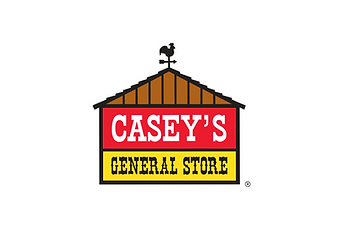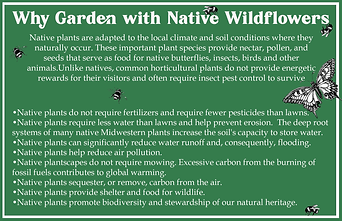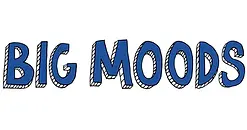
The
Prairie Project

This project seeks to continue our mission to educate and inspire a love of learning in our visitors out the front doors of our museum and onto the grounds of the park.

The Joplin History & Mineral Museum is excited to be collaborating with U.S. Fish & Wildlife and our community partners to boost the native Missouri ecosystem on museum grounds. We are beginning this project by filling our flower beds with native flowers and returning the areas on the north and south ends of our building to native prairie by integrating grasses, sedges, and a variety of flowers. The next phase of the project, to be continued in the coming years, will see our organization extend the native footprint into the Mining Machinery Yard, east of the museum, and scattered throughout the rest of Schifferdecker park.
Community Involvement Events
Pollinator Mural Project
This mural project was funded and created entirely by community members. It extends the museum’s educational mission outside the museum doors and onto the grounds. The mural is part of the museum’s Prairie Project to integrate Missouri native plants back into the park. It took over 25 hours to install and the participation of 40 local art students from area high schools. The museum hopes the mural will help share the importance of Joplin native plants that require less care, less resources, feed our soil, slow down erosion, and provide nectar, pollen, and seeds that serve as food for native butterflies, insects, birds and other animals.
Students of the Carl Junction High School Visual Arts Department, with special thanks to student designers Avari Fifer and Olivia Wobken, were led by CJ High School Visual Arts teacher and artist, Nellie Mitchell and Visual Arts teacher Amber Davidson to install the mural. Mural site preparation was done by the Baxter Springs National Honor Society and led by Family & Consumer Science teacher, Leslie Bowman. Materials were sponsored by a generous grant from Casey’s Cash for Classrooms, Spectrum Paint, ABE Paint Team, and Ozark Center Comprehensive Behavioral Health Services.
S
P
O
N
S
O
R
S


Baxter Springs High School National
Honor Society



Carl
Junction
Visual
Arts
Department

Joplin High School National
Arts Honor Society

Phase 1: Block filler to create
a canvas

Using supplies graciously donated by a generous grant from Casey's Cash for Classrooms, Spectrum Paint Co. , Ozark Center, and the ABE Paint Team, the Baxter Springs Honor Society got the first step knocked out!
.jpg)

Phase 2: Adding the background and tracing the mural outline onto the wall
Students from the Carl Junction Visual Arts Department, led by their teacher Nellie Mitchell, spent a "night at the museum" to project the mural outline onto the wall and sketch it out in pencil





Phase 3: The painting of the mural
This portion of the mural installation took two days, 35 Carl Junction art students, two teachers, and lots of snacks to complete


_JPG.jpg)










Planting native is beneficial in so many ways!
-
Reducing our amount of lawn space will decrease the ecological footprint we create by eliminating the need for pesticides, reducing needed resources for maintenance, and the man-power necessary for the upkeep
-
Encourages native animals and essential insects to return to the park
-
Reduction of erosion and increased water retention for our soil
-
Absorption of air and soil pollutants improves air quality
-
and many more...
Environmental and Economic Benefits of Native Plants
Ozark Glade Ecology and Restoration Methods
Our Plan
Phase 1
November - December
Parks to disperse mulch
December - February
Request edging funds from Historical Society
Purchase edging - Parks to install
Disperse compost
Seeds put in on north plot, south plot, fenced in north, center and south plots
Community Day for planting
April - May
Put in plugs and shrubs in north plot, south plot, fenced in north, center and south plots
Community Day for planting
September - October
Grass seed put in
Museum Staff for planting
Phase 2
May - July 2022
Spray 3 rounds of herbicide in machine yard
December 2022 - February 2023
Seed machine yard
Community Day for planting
April - May 2023
Put in plugs and shrubs in machine yard and interspersed in sunken garden
Community Day for planting
Possible Phase 3
2023
Incorporate accent clumps of native plants into other areas of the park
To accompany the reintegration of native life, we plan to incorporate educational materials, sculpture, and other artistic elements throughout the outdoor space to provide the opportunity for museum visitors to learn about Missouri wildlife, the importance of pollinators, and how they can add natives to their own garden spaces.






Our Community Partners








.webp)









